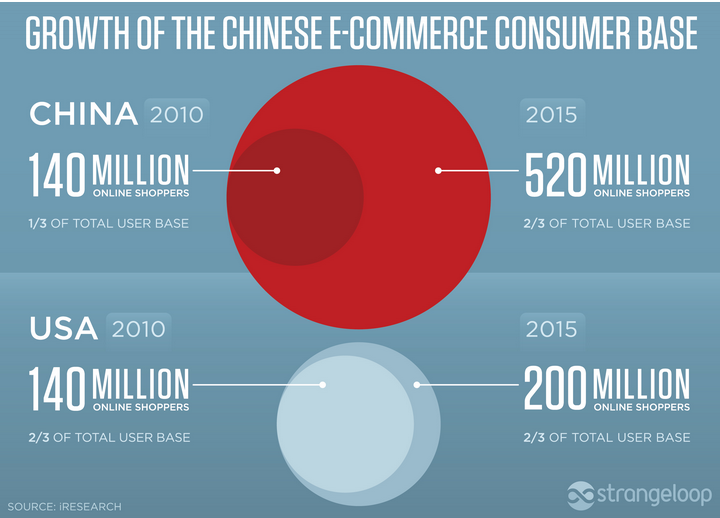 I conjecture that even if our faithful readers have not been fully “sold” on the amazing story of the emerging Chinese online giant that is the Alibaba Group, then (at a minimum) those readers have found the initial onslaught of Wall Street promotional stories about Alibaba, as well as the slew of stories about the company’s guiding founder/strategist (Ma Yun; aka Jack Ma) to be engrossing and intriguing.
I conjecture that even if our faithful readers have not been fully “sold” on the amazing story of the emerging Chinese online giant that is the Alibaba Group, then (at a minimum) those readers have found the initial onslaught of Wall Street promotional stories about Alibaba, as well as the slew of stories about the company’s guiding founder/strategist (Ma Yun; aka Jack Ma) to be engrossing and intriguing.
In this article, I am going to focus primarily upon the company and a few methodologies related to the calculation of an objective “fair value” figure for Alibaba. To begin, let’s identify some foundational facts regarding the company and its place within the online commerce space:
1) Alibaba is just 15 years old, having been founded by Ma[1] in 1999;
2) As you know, U.S. commentators regularly compare Chinese Internet companies to the best-known U.S. firms in the “same space”. For example, the so-called “flagship” website created by Alibaba is Taobao.com… which is most often likened to eBay[2]. However, that analogy is overly simplistic for these reasons:
a) The U.S. online marketplace evolved on two levels:
i) Major retailers created company-specific websites and online ordering capability.
* The axiom developed that each retailer needed an online presence that includes the capability to place an order online;
* Customers within the U.S. came to expect such sites;
* Analysts regularly refer to the quality (or lack thereof) of a retailer’s “online presence”.
ii) eBay (EBAY) and Amazon (AMZN) developed as an independent “channel” for online sales within the U.S.
- EBAY has primarily served the “consumer-to-consumer” online market;
- AMZN has primarily served as a “small/middle-sized business to customer” marketplace.
b) In rather sharp contrast, the Chinese online market has evolved quite differently:
i) Alibaba.com emerged at an incredibly opportune “moment” within the Chinese E-tailing marketplace (which in 1999 was still relatively nascent). It serves the “business-to-business” online marketplace;
ii) Taobao.com emerged in 2003 when EBAY dominated the consumer-to-consumer marketplace but that market was still in its infancy. However, Taobao is built for small/midsized retailers to sell new items to online customers, as well as to serve the consumer-to-consumer marketplace.
iii) More recently, TMall.com was created (2011) to serve large retailers in selling new products to customers.
c) Finally, here are some metrics on the Chinese Internet/Mobile market:
i) China’s population is estimated at 1.35 billion people;
ii) Less than half the population currently has access to the Internet;
iii) It is estimated that China had approximately 302 million Internet shoppers during 2013;
iv) In 2013, 500 million Chinese accessed the Internet via Mobile phones;
v) Online shopping accounts for 7.9% of total Chinese consumption.
Therefore, we can see that U.S. investors should not rely on the analogies most often proffered when commentators discuss companies serving the Chinese online marketplace. The market in China is significantly different from the U.S. market, and it is therefore best to think of Chinese online companies within the unique dimensions/context of the Chinese market itself!
It is with this understanding that we can garner a much clearer and deeper appreciation for how Alibaba rose to the prominence it enjoys today! As I reflected upon the strategy employed by Ma through the history of Alibaba, I immediately recalled the famous quote from Nathan Bedford Forest regarding his success on the battlefield:[3] “Be there the firstest with the mostest!” In that context, consider this very crude outline of the evolution of Alibaba:
1) Alibaba.com: Ma created this business-to-business online marketplace to help Chinese firms take their rightful place within the global business-to-business market. For Chinese firms, he was the “firstest” to provide an online infrastructure for access to that market!
2) Taobao.com: because EBAY dominated the consumer-to-consumer online market in 2003, Ma was not the “firstest” in this space. However, because Taobao.com was built on a “No Transaction Fee” model, it quickly demonstrated that it provided the “mostest”… stealing market share from EBAY and “chasing” EBAY out of China in three short years.[4]
Just as importantly, Taobao.com was available for small/midsized companies to sell new or used products directly to customers! Needless to say, the “No Fee” model was a “bargain” for retailers, who flocked to offer items through Taobao.com. And (extremely importantly) Alibaba was continually able to scale Taobao upward to meet the exponentially growing demand!
3) Recognizing that online commerce cannot take place without a trusted, secure, reliable online payment vendor, Ma created Alipay.com in 2004 to serve as a fully “Chinese” vendor in this space (until then dominated by PayPal). Just as with Taobao, Alibaba was regularly able to scale up the capacity of Alipay to serve the surging demand for its services! Since its founding, and despite a steadily expanding number of competitors, Alipay has managed to maintain a market share between 45-55%!
4) In 2011, Ma introduced TMall.com, the online marketplace specifically designed for larger retailers. The financial model for TMall is different than for Taobao… and yet is still compelling for retailers and buyers alike! Although the actual “transaction fees” are modest (ranging between 0.5% and 1.5% depending on transaction size), Ma recognized the need to charge participating retailers an upfront “Deposit Fee” to cover: a) the expense of ensuring customers against counterfeit[5] goods; b) the fixed infrastructure costs of the site; and c) the sales commission (as identified above, the commission depends upon the transaction value).
It doesn’t take an economics genius to recognize the inevitable appeal of Alibaba’s various sites:
1) For retailers (of whatever size), any of these sites provide them with a proven, scaled up, “one-stop” solution for gaining an “online presence”. Instead of incurring the cost of developing its own website, and creating the capacity to handle its own (“in house”) online transactions, Chinese retailers can rely upon Alibaba for a “state of the art”, economical solution to their online needs.
a) Consider in particular the appeal of Alibaba sites for smaller and midsized retailers.
Without Alibaba, such companies would not have wide spread visibility… and therefore, they’d have little credibility. In addition, they would be without a means to handle payment processing. Therefore, by fulfilling the economic principle of specialization (do what you can do better than others… and on a large scale) Alibaba has become the “go to” e-tail provider for Chinese retailers.
2) For customers, they can depend upon Alibaba as the oldest, most tested/proven, low-cost provider for their online commerce needs.
3) Since Alibaba is Chinese-created and Chinese-operated, it is more culturally aware and responsive than foreign firms in that space. As one example, The Economist has described one obvious competitive advantage of Taobao this way (paraphrased): it resembles an online bazaar, it is colorful and chaotic, and it enables dickering (negotiation) between sellers and buyers, just as one would expect within a typical Chinese street marketplace.[6]
I know that our most astute readers have learned not to rely upon generalities that are spouted in narratives. Therefore, instead of just saying that Alibaba dominates the e-commerce market in China, let me offer hard data! Below is a recent detailed breakdown of market share within four Chinese market channels: 1) business to consumer; 2) consumer-to-consumer; 3) Mobile; 4) Online Payments.
Are you impressed yet?
If you aren’t, and you prefer to be U.S.-centric with regard to online commerce, take a look at this graph of sales volume within the global e-tailing market between 2003 and 2011.
Take a good look at the slope of Chinese growth! I think it is a safe bet that, during the next few years… the slope of Chinese sales volume will continue to outshine the slope of growth curves in all the other countries, including the United States!
Alibaba has been so seminal within the growth of the Chinese e-tailing market that the arc of Alibaba’s growth parallels that of Chinese e-tailing as a whole, and there is a simple explanation for that fact. Because Alibaba proved to be “the firstest with the mostest” in virtually every segment of the Chinese online marketplace… as its websites grew, the “value added” of Alibaba became more and more irresistible for business and consumer clients alike. Why? Because Alibaba was the:
1) Low-cost provider;
2) That attracted new customers in exponential numbers (both buyers and sellers) … [and] Alibaba was always able to scale its business to meet the escalating demand! As the “Alibaba proposition” became more compelling for customers of all types, the cost of “customer acquisition” steadily decreased!
3) The result was that Alibaba became the biggest online marketplace;
4) If sellers wanted to maximize their online exposure and “footprint”, they often felt as though they had to be found on an Alibaba website.
Given the above, a major theme within the history of Alibaba has been that “success bred more success”. This resulted in what one could term an economic “snowball effect”. Analysts today often refer to such a phenomenon as the “Network Effect”.[7] Whether one calls it “snowball effect” or “Network Effect”… Alibaba’s amazing sales and financial metrics can be attributed to it:
1) By 2013, 80% of Chinese online retail business was transacted through one of Alibaba’s websites![8]
2) It is often cited that at least 60% of all volume passing through the Chinese post office is related to Alibaba!
3) During 2013, Alibaba processed 11.3 billion orders … with an aggregate value of almost $250 billion. Volume-wise, that is two-thirds more than AMZN and EBAY combined!
4) Alibaba has 231 million active annual buyers;
5) A unique event within China is “Single’s Day” (November 11)[9];
i) Alibaba offers a huge annual online sale on Nov. 11th;
ii) The 2013 “Single’s Day” Sale resulted in $5.7 billion of sales!
Here is a graph of the slope of Alibaba’s growth: [Note that Operating Income is in red;Net Income appears in green; and Revenue appears in blue:
Thus far, it may seem to some readers that the “author’s bias” is that Alibaba has done so many things “right” and is so dominant that it is a compelling[10] “buy”. I have confidence that Wall Street (especially the underwriters of the IPO) is counting on U.S. investors to feel that way! In fact, when Wall Street touts data such as the 75-80% market share figure above (or the 60% of Chinese post office volume datapoint), it expects to literally grab the attention of U.S. investors … because those folks simply don’t see such market dominance within the United States. However, I strongly caution you to interpret allAlibaba metrics within the context of the particular characteristics of the market in China (as described earlier). It also may prove helpful to you to review these metrics to more clearly discern the relative scale of Alibaba:
One respected analyst estimates that Alibaba’s revenue in 2024 will be $47.6 billion.
In contrast, here are revenue numbers reported during 2013 for these well-known U.S. companies:
Amazon $78.1 billion
Google $62.3 billion
Facebook $8.9 billion
At this point (for balance) let’s try to highlight some of the factors that could prove to be a headwind for Alibaba in the years ahead.
First, let me ask you what (inevitably) happens when an economic market is growing in size and profitability? It draws competition! These trends are well known:
1) The Chinese online market has grown exponentially and will surely continue to grow at a rate higher than other global markets;
2) In large part, the market will grow because of three significant current trends in China:
a) The middle class is rapidly growing, and with it, so is disposable income;
b) The distribution networks are both growing and improving in quality;
c) Internet use continues to grow, as does the penetration of Mobile.
d) These factors combine to suggest projected Chinese e-commerce sales of at least $180 billion per year!
Consequently, the market is attracting competitors (both Chinese and international) who are willing to spend large amounts of capital to lure online users away from Alibaba!
For example, Amazon (AMZN) and eBay (EBAY) have felt compelled to jump back into the Chinese business-to-consumer online market… helping to contribute to the market becoming much more competitive. And within the Chinese Internet space itself, Jingdong[11] (formally Beijing Jingdong Century Trading Co., Ltd… now listed on the NASDAQ as JD.com (JD)) and Tencent Holdings Ltd.[12](TCEHY) have begun to heat up the online marketplace by positioning themselves as superior to Alibaba on: 1) Delivery (promising faster delivery)[13]; and/or 2) Service (promising superior “after sale service”)[14]. As you can guess, competitors have to position themselves vis-à-vis Alibaba on factors other than price, since Alibaba is the low-cost leader.[15]
As incredibly successful as Alibaba has been, there are a couple of “edges” upon which future metrics could fall under pressure. First, because of its success in customer acquisition through its “low cost” advantage, it has not needed much in the way of “Research & Development” (it has never pretended to be a “tech innovator” like AMZN or Google (GOOG). That has allowed its profit margins to be unusually high (pretax margins about 50%; net margins about 40%).[16] Therefore, its business model has depended upon generating modest fees per transaction, but with huge volume! Anything that significantly cuts into its sales volume will diminish its financial metrics.[17]
The obvious implication is that Alibaba will need to increase its development efforts in order to compete with all of its returning and emerging competitors over a wider range of factors.[18] Those costs will pressure margins.
Another headwind for both margins and profits will be income tax! Currently, it is estimated that the rate Alibaba pays in taxes is about 10%; however, the statutory rate in China is 25%.[19] No matter how the company has managed to keep its tax expense low, it is not realistic to expect that such a low rate will continue in the years ahead!
Given the above, consider yourself both alerted and warned that making a wise decision on the purchase of stock offered through an IPO is not a simple process, no matter what the voices of Wall Street suggest!!
As an aside, my birthday is coming up soon[20] and to anyone who asks, I tell them that my “Birthday list” is simple: either a bottle of Midleton Irish Whiskey or a lengthy lunch with the current dean of stock valuation, Aswath Damodaran[21]. Each of those gift options would provide an incomparable and memorable experience – enabling to either “feel” wiser and better informed or (much better) to actually become wiser and better informed!

Dr. Aswath Damodaran is a professor of corporate finance and equity valuation at the Stern School of Business at the New York University.
Dr. Damodaran provides what I consider to be the most thorough and trustworthy valuation work available… and surely his work is leagues more reliable than the work of the typical Wall Street analyst!
Let’s take a look at Damodaran’s comprehensive approach to equity valuation, with particular focus upon Alibaba!
There are at least three distinct methods for valuation: 1) Intrinsic; 2) Relative Value; 3) Market Price.
Considering the first, Intrinsic Value, we need data gathered from a deep dive into the currently available financial report from the company (Alibaba). In this case, we access the 9-month data available from the F-1 recently filed with the SEC, plus other data we can draw upon to flesh out estimates of a full 12 months of financial performance!
Damodaran gives us access to elaborate worksheets upon which he depends for his work! Here is the worksheet that contains the most vital underlying data:
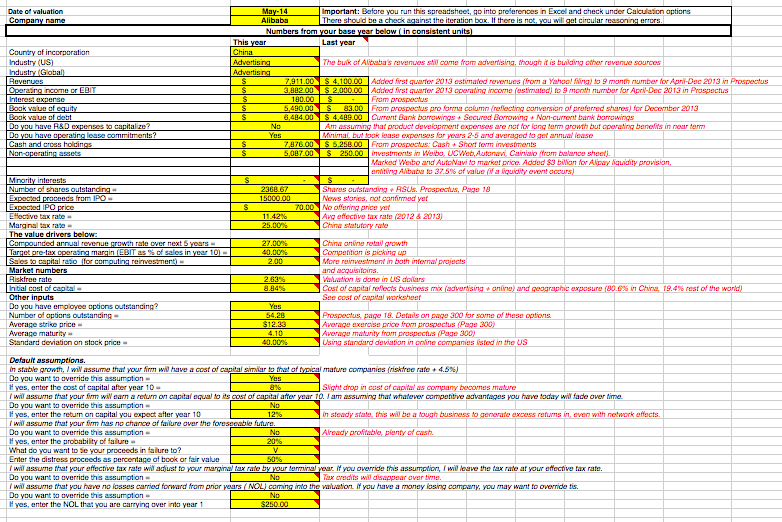
This worksheet summarizes the Alibaba metrics Damodaran believes are most fundamental in calculating Valuation.
Here is Damodaran’s calculation of the company’s “Cost of Capital’:
I confess that Damodaran’s workbook is so extensive that it exhausts our capacity to detail it. But here is (in my opinion) the piece de resistance of his valuation work on Alibaba… the per share estimate of “fair value”, given his assumptions (which include a diminishment in margins (40%) and revenue growth (25-27%)):
As you can easily see, the key metric for which we are looking is $61.46/share. At the risk of becoming branded as an unrepentant cynic, I can virtually guarantee that the IPO price announced by the underwriters[22] just before the IPO date will be significantly higher than that.
It bears pointing out how much discipline and sound judgment is required to effectively (and dispassionately) complete the type of analysis that we have come to expect from Damodaran! For example, the questions posed in this chart are hardly elementary, but they must be answered before a meaningful valuation can be projected!

This is a diagram of a logical series of questions that need to be answered to develop assumptions about Alibaba's future growth metrics.
The second valuation methodology is “Relative Valuation”. Within this method, one gathers the revenue and net income metrics … and then adjusts those based upon the relevant (and/or reliable) financial metrics of a company as they compare with other companies within that same space. This is done in order to hone in upon what could be considered an accurate value relative to its competitors. For example, for Alibaba, Damodaran considered several key metrics before discerning that EV/Sales [Enterprise Value/Sales….. summarized below]:
and/or EV/EBITDA [which can be best visualized as]:
A valuation metric that divides a company’s Enterprise Value by [Earnings before Interest, Tax, Depreciation, and Amortization]
are the optimum metrics for use within projection of Alibaba’s valuation! In other words, Damodaran believes that either of these metrics is more helpful in the valuation process than any other alternative metrics currently available.
Once the above metrics are calculated, the next step is to review parallel metrics from competitors who participate within one or more of the industry space(s) with which Alibaba is identified… such as the following:
Damodaran takes two different approaches at this point. First, presuming that the underwriters would prefer to use the Internet space and metrics during the mandatory IPO “roadshow”, Damodaran drew upon data from that space (along with his assumption of 27% expected revenue growth and an operating margin of 49.07%) to develop this equation:
EV/Sales Alibaba = -0.94 + 21.21 (.27) + 15.06 (.4907) = 12.18
The 12.18 number is Damodaran’s “Revenue Multiplier”, which when multiplied by Alibaba revenue of $7.911 billion yields $96.356 billion. To that number, we must add the value of these items:
CASH
EXPECTED IPO PROCEEDS
“CROSS HOLDINGS”
Finally, we must net out Alibaba’s DEBT!
At this point, it is natural to ask: “What are Cross Holdings”? Over the years, Alibaba has accumulated an equity stake in a number of online companies that are held for their current and/or future strategic value. Currently, those holdings include the following:
Damodaran’s work shows that the aggregate value of Cash, Cross Holdings, and IPO Proceeds is $27.963 billion, while the existing Debt is $6.67 billion. Therefore, the Relative Valuation calculation (based on these assumptions) is $117.623 billion… significantly lower than the “Intrinsic Valuation” (by about $28 billion).
Then Damodaran demonstrates an alternative calculation, which reflects his brilliance at what he does! Knowing that U.S. investors respond best to specific examples of companies with which they are already familiar, he opined that underwriters might be tempted to incorporate Baidu (BIDU) metrics into a calculation of Alibaba’s valuation.[23] Therefore, Damodaran shows that when BIDU’s ratios are applied to Alibaba’s metrics, the following is the result:

This provides some comparative Baidi (BIDU) metrics that might be used to calculate a value for Alibaba.
Oooops! Calculating valuation that way leads to an even lower valuation. I think we can count on the IPO Team to avoid going that route!!
The third valuation methodology referred to earlier (Market Pricing) is of extremely limited value in regard to Alibaba, because Alibaba is not yet publically traded. However, in a follow-up article, I will demonstrate how useful that methodology can be with a stock such as Yahoo (YHOO), that has “Cross Holdings” in both Alibaba and Yahoo Japan! When you can extrapolate the value of constituent parts of a company such as YHOO, add those parts up, and discover that the market currently undervalues YHOO’s assets, such information can be most helpful!
Given all of the above, what else do we need to know about Alibaba and the approaching IPO? Perhaps the most obvious category of information we need is: “What are the MAJOR RISKS? Here are the risks that I consider most germane:
1) Accounting standards: every investor in Chinese equities should know upfront that the quality, consistency, and regulation of financial statements in China leaves much to be desired – and it is certainly far below the standards in the U.S. (for example, GAAP, the regulatory requirements of Sarbanes-Oxley, etc.);
2) Corporate Governance: it is common knowledge that corporate governance within U.S. companies can be (euphemistically) of “uneven” quality. In fact, the more helpful U.S. security analysts include in their reports a rating of the quality of corporate governance for each company they cover. That being said, it is not unfair to suggest that, in the aggregate, the quality of corporate governance within the U.S. is significantly higher (and more consistent) than corporate goverance in China. Simply consider the brouhaha that Alibaba investors were dragged through (quite publically) when it was revealed that Ma Yuan had legally separated Alipay from the rest of Alibaba. [Further, he negotiated with government officials between 2008 and 2009 to place Alipay into a legal entity entirely under the control of Chinese owners (including Ma Yun) at a price alleged to have been lower than “fair value”].
3) The Health of the Chinese Economy: On a regular basis, I see experts warning that China’s economy is on the brink of a “Bubble” that will burst, with negative effects ranging from Recession to something much worse. If those warnings should come true, there will be a significantly negative impact upon all Chinese retailers, including Alibaba!
4) The Legal Structure of IPO shares: As we have pointed out earlier, the government of China is quite serious about its restrictions upon foreign ownership within a wide range of industry groups (eg. financial concerns such as Alipay). The Retail Space is one of those industries within which these Chinese government restrictions apply.
Because of those restrictions, Ma Yuan and his management team elected to have Joseph Tsai structure the IPO as a “Variable Interest Entity” (VIE). Tsai therefore created a legal entity, incorporated within the Cayman Islands, entitled the “Alibaba Group Holding Limited”. This intriguing sounding entity is what sits atop a complicated VIE structure that, through a series of contracts, grants Alibaba Group Holding Limited the economic benefits of owning the Alibaba business enterprise in China!
I can just imagine at least a few of you thinking: “Huh? What? Variable Interest? VIE? Cayman Islands? Economic benefits?”
Yes, friends! Between now and August, the Wall Street IPO promoters will be trumpeting (interminably) unbelievably wonderful things about Alibaba, as well as the unparalleled opportunities available through the Chinese e-tailing space. Those promoters will try to sell us shares in what amounts to a “shell company” based in the Cayman Islands! It will be fascinating to see precisely where, how often, and in what format that crucial fact will be disclosed (as required by law, and sound business ethics!).
On the encouraging side, well-known Chinese stocks such as Baidu (BIDU) and Weibo (WB) share the same VIE legal structure. In addition, the shares of Alibaba purchased by Yahoo (YHOO) in 2005 are similarly predicated upon a VIE legal structure.
However, no one should participate within the Alibaba IPO unless she/he realizes that the Chinese government has the power, at any moment, to declare the VIE structure “null and void”. I suspect that the IPO underwriters will “undersell” that considerable risk. Instead, they will emphasize that if a VIE investment was good enough for the captains of industry running YHOO in 2005, as well as the thousands of investors who own WB and BIDU, a VIE investment should be good enough for you!
For anyone inclined to trust Wall Street’s counsel on that point, I urge you to research the legal history related to the following topics: 1) Chinachem’s investment in the China Minsheng Banking Corp.; 2) the action by China’s General Administration of Press and Publications, barring VIE’s within an industry that had already employed that legal structure for stock purchased by foreign holders; and 3) the reversal of prior government approval for foreign companies to buy stock in China Unicom through a legal structure that skirted the official proscription against foreign ownership!![24] If the Chinese government has exercised the power to change investment rules after the fact, what will prevent it from doing so again![25]
5) “Friends in High Places” could become “not so friendly” at some point in the future: This is a corollary to point 4) above. The best summary of this risk comes from Aswath Damodaran: “With any Chinese company, you know the government has its finger on them. You don't get to be the most successful Chinese company by chance. So I'm not sure who Jack Ma knows, but that has to be a factor here. And one thing that would worry me is the fact that the legal set-up with this, as with many Chinese companies, essentially puts me at the mercy of what the Chinese government thinks about the company.”
INVESTOR TAKEAWAYS:
I confess that my research has led me to become extremely impressed by Ma Yun (aka Jack Ma), the creation and incredible growth of his company (Alibaba), and the breakneck growth of the e-commerce market in China (including the rapid evolution and growth of Mobile-based e-commerce)! That being said, no founder or CEO is perfect, omniscient, or invulnerable. Nor can any company be accurately labeled as a “sure thing”.[26]
I encourage you to do as much due diligence on Alibaba as you can find time for. If nothing else, it will make for fascinating reading, on multiple levels! And (of course) in addition, that reading will help you to prepare for the onslaught of Alibaba articles, analyses, CNBC segments, and direct or indirect sales pitches which are in store for us between now and August!!
I do ask you to (at a minimum) keep these points in mind:
1) The e-commerce market in China is quite different than e-commerce in the United States. Do not tolerate overly simplistic analogies, describing Chinese e-commerce companies in terms of U.S. companies (pretending that such analogies offer a sufficiently accurate description).
2) Alibaba offers incredibly impressive growth metrics. However, the recently announced partnership between China’s number two e-commerce company (JD.com) and the number one Internet business, Tencent, could well provide some genuine competition for Alibaba in the quarters ahead. Time will tell if that partnership can manage to steal some of Alibaba’s monstrous market share!
3) It behooves us all to pay close attention (and due respect) to the extensive valuation work on Alibaba published by Dr. Aswath Damodaran. To grossly oversimplify, Dr. Damodaran opines that the most helpful valuation for the Alibaba IPO would be between $60 and $62/share.
As a point of perspective, keep in mind what Dr. Damodaran himself often cautions: namely, that valuation changes over time in response to both financial metrics and the perception of market participants. In that light, review these two images:
a) VALUATION OF ALIBABA BASED UPON EQUITY PURCHASES OR ANALYST REPORTS:
Note that SFTBY is Softbank and YHOO is Yahoo[27]
b) CHART OF VALUATION BETWEEN 2012 and 2014:
Note that I also prepared a graph from 2005 onward, but the extremely low value in 2005 negated the value of the graph. What the graph illustrates is how quickly the valuation of a story growth stock such as Alibaba can change … due to changes in both metrics and perception!
4) It is a virtual lock that the IPO underwriters will push the actual offering price for Alibaba as far above that $60-62/share range as they can. The reason is simple. The higher the offering price, the larger the proceeds from the IPO will be, and the larger their IPO fees will be!![28]
5) Do not participate within this IPO unless you are prepared for volatility and a very uncertain price path for the Alibaba following the IPO!
6) Do not participate in the IPO unless you have fully considered all five risks I have enumerated merely paragraphs earlier!
FINALLY, as a bonus, here is a video of an interview (by Charlie Rose) of Ma Yun (aka Jack Ma): https://www.youtube.com/watch?v=rUwmakdaye4
DISCLOSURE: I (duh!) do not own Alibaba stock. I have (in the past) owned YHOO and AMZN. I have not purchased anything through Taobao.com or TMall.com, despite the fact that I am a customer of Amazon.com. Nothing in this article is intended as a recommendation to buy or sell anything. Always consult with your financial advisor regarding changes in your portfolio – either subtractions or additions. Finally, I have a serious and heartfelt “bone to pick” with Mr. Ma and his associates. Take a look at this page from Taobao.com:
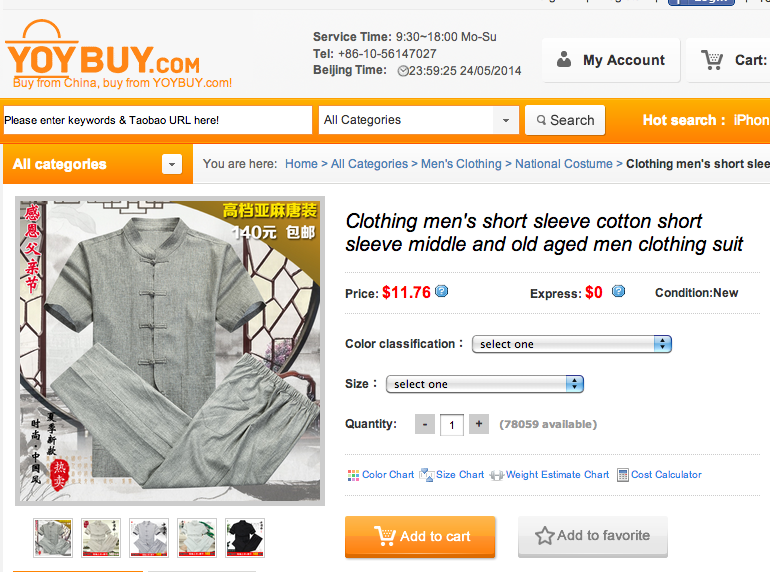
Perhaps this particular item is one that Alibaba would recommend as a "Father's Day" gift. I respectfully disagree.
FOOTNOTES:
[1] To his credit, Ma has given “founder” credit to at least 18 others… primarily the student/disciples that were with him from the start.
[2] Taobao.com managed (between 2003-2006) to chase formerly dominate eBay out of the China market by relentlessly taking over market share through its low-cost advantage and its culturally sensitive appearance and functioning!
[3] Remember that Ma was wont to imagine himself as a general as he grew up.
[4] Taobao relies on advertising revenue to sustain its operations.
[5] That is, “knockoff” products.
[6] … or within the marketplace of “Old Jerusalem”.
[7] Morningstar uses that term to describe one of their criteria in identifying a company that has a “Wide Moat”!
[8] I have seen figures between 75% and 84%… in any case, Alibaba dominates! Also note that I ran across one source claiming that 76% of all Mobile Retail sales in China (excluding “virtual goods”) were processed through Alibaba sites!
[9] On this day, young singles either celebrate or bemoan the fact that she/he is single.
[10] Perhaps even a “screaming” buy
[11] Formerly 360Buy
[12] No, this does not refer to a Chinese version of 50Cent!!!
[13] JD has committed lots of capital to this effort, constructing a new 16 million feet warehouse and hiring a very large core of scooter drivers trained to deliver goods as quickly as possible.
[14] The JD CEO is quoted in an interview about this: “The most appealing aspect of our company to investors is where we’ve focused our efforts over the last 10 years, on superior customer services. There will be an increasing number of [Chinese] consumers who will put a premium on superior service.”
[15] Competing with Alibaba on price would be as pointless as competing with Walmart (WMT) on price. By the way, Alibaba’s worldwide merchandise volumes lag only WMT!!
[16] For the sake of comparison, the operating margins for Facebook (FB) and GOOG during 2013 were (respectively) 35.6% and 23.4%.
[17] One significant aspect of the F-1 Alibaba filed with the SEC in preparation for the IPO is that it does not separately break out the revenue streams from Taobao and TMall. Any analyst trying to project future financial metrics and/or calculate a valuation is seriously disadvantaged by the absence of such detail!
[18] For example, an enhancement and broadening of its delivery network (including offering “same day delivery”.) Or improving the quality of its customer service.
[19] This may reflect government favor or merely extremely capable and creative Alibaba accountants.
[20] It is a “rite of passage” birthday.
[21] He is a Professor of Finance at the Stern School of Business at New York University, where he teaches corporate finance and equity valuation.
[22] The contract terms under which underwriters operate within the IPO process are complex. No one that I know is yet aware of the details regarding the Alibaba IPO… but it is safe to assume that the IPO will net the underwriters between 1.1% and 4% of the total IPO value, plus lots of potential bonuses and performance awards. To put it succinctly, it will be in the underwriters’ best interest to jack the IPO price upward (ie. as far above $61.46 as possible!! Note that 1.1% was the percent used in the Facebook IPO and 3.25% was the agreed upon fee for the Twitter IPO. The commission rate for the just finished JD.com IPO was the more typical 4%!
[23] Damodaran properly notes that BIDU is the only other large, publically traded Chinese online firm with stock structured within the same legal framework as Alibaba (“Variable Interest Equity”)… but we will get to that issue very soon!
[24] In essence, the government approved the purchase of China Unicom by foreign buyers (presumably to ensure more demand) through a legal structure that skirted Chinese law… and then later (despite foreign ownership already being established) changed its mind and ruled that legal structure illegal.
[25] Many suggest that China declaring VIE structured foreign investment invalid/illegal at this point would be tantamount to an economic “nuclear option”… putting any future foreign investment flows into China at serious risk. Is that an assumption that, in your mind, sufficiently eliminates this risk?
[26] Remember the days when it was thought to be an AXIOM that Apple (AAPL) would continue moving higher and higher until it reached the $1000/share level?
[27] Data compiled by Thomas R. Petty, C.F.P.
[28] That is one simple illustration why Leo Dicaprio’s recent block buster movie hit was titled: “The Wolves of Wall Street”
Related Posts
Also on Market Tamer…
Follow Us on Facebook

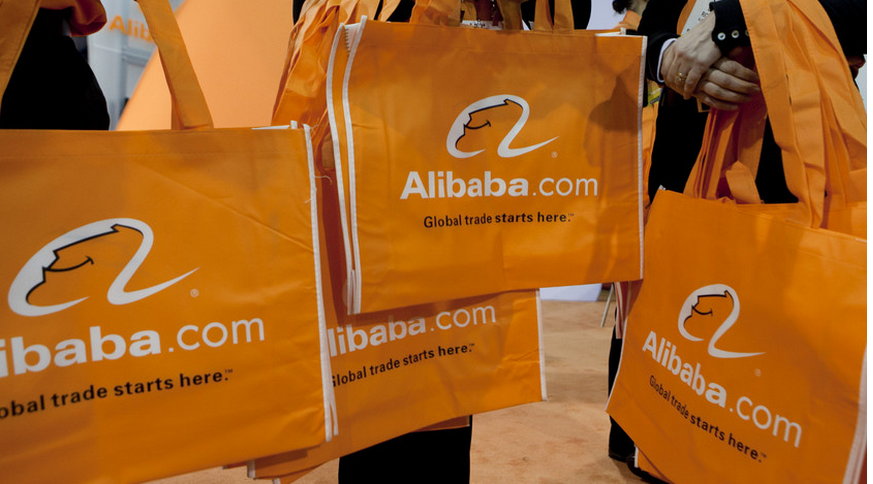

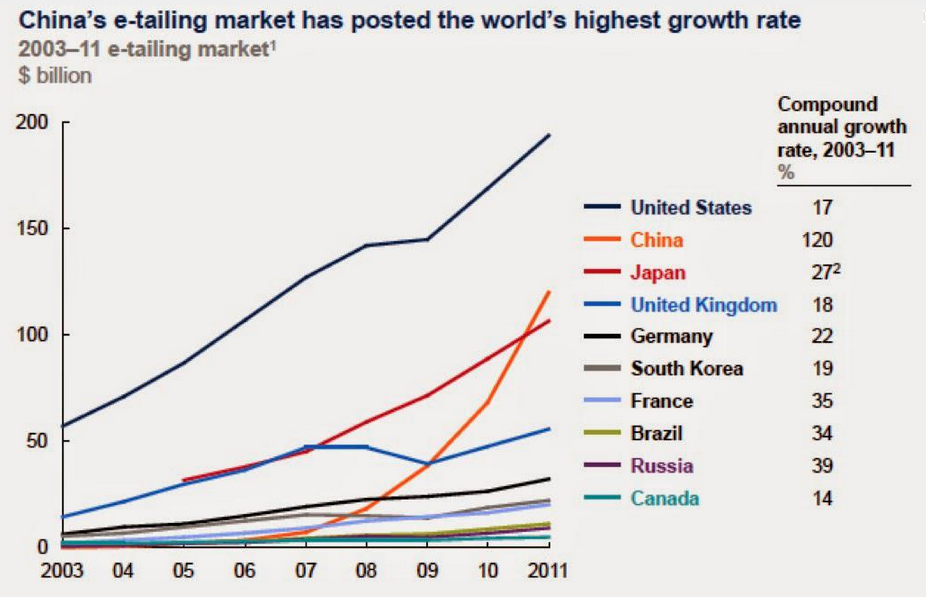
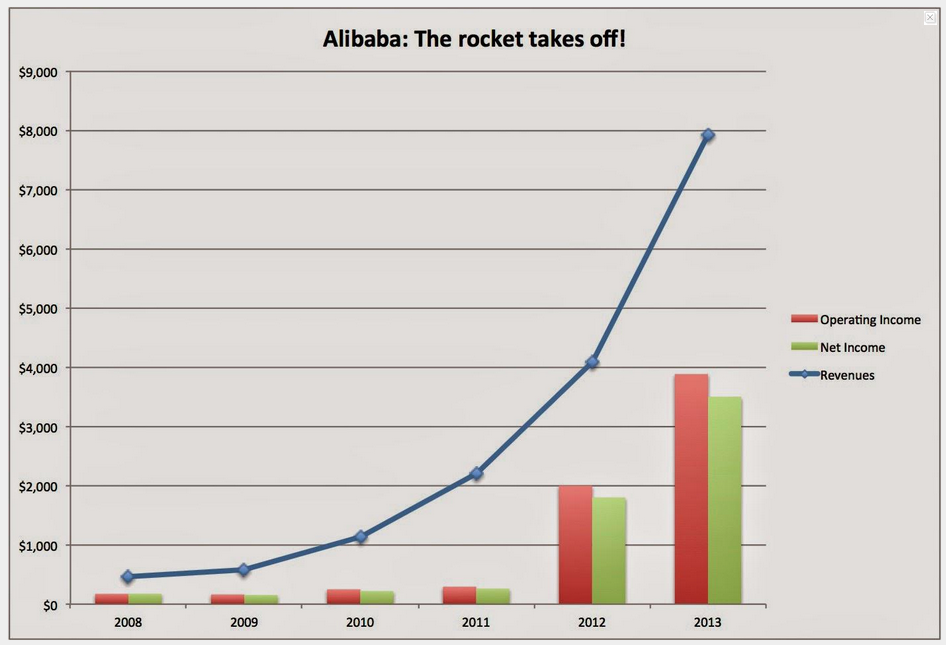


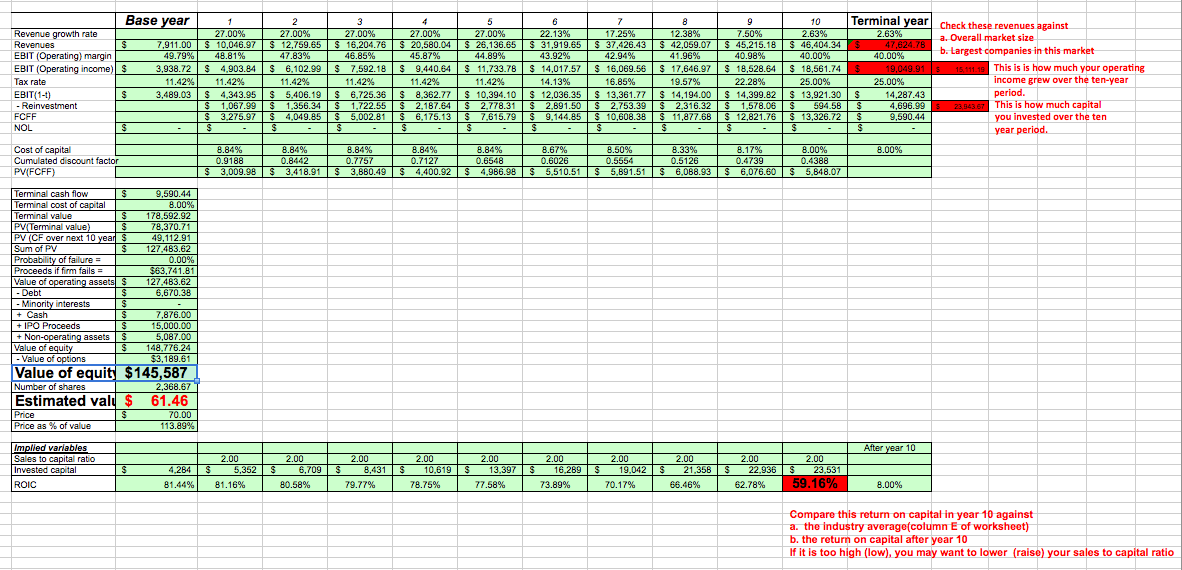






 Tesla Reports Automotive Revenue Down 20%, but the Stock Rises on Positive News
Tesla Reports Automotive Revenue Down 20%, but the Stock Rises on Positive News
